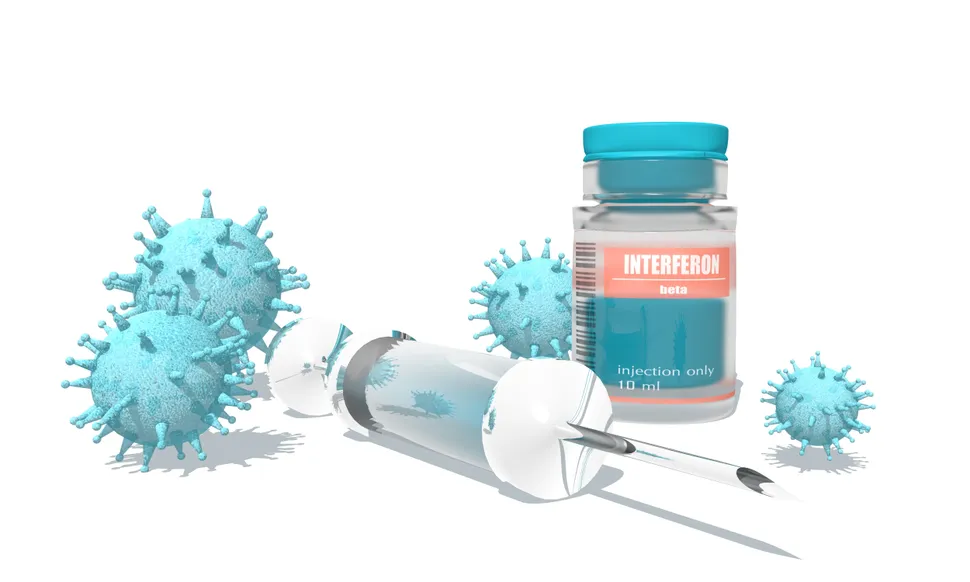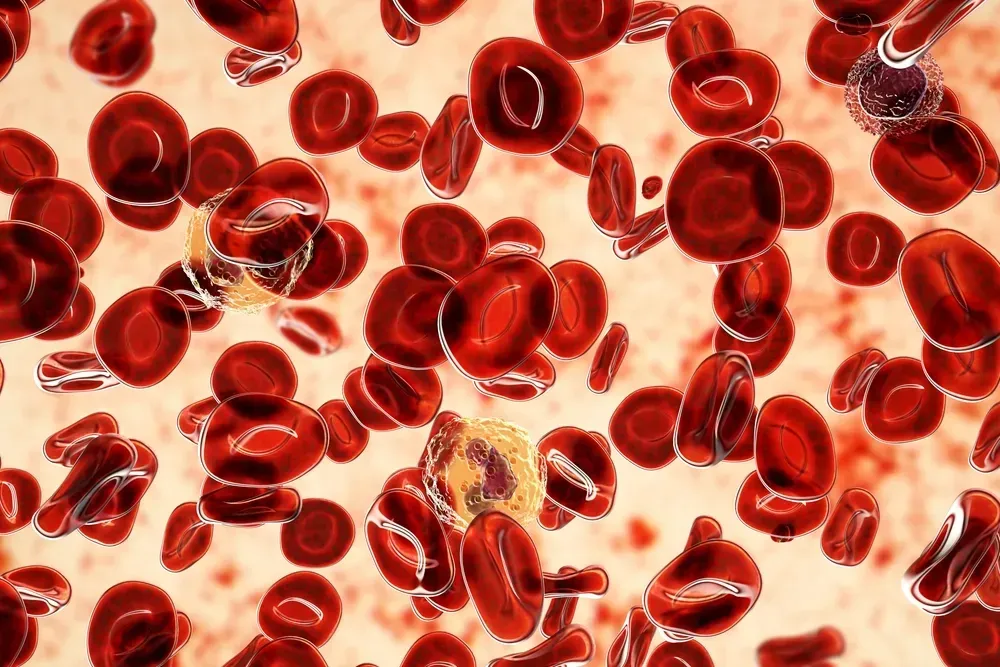What’s Interferon's Role In Treating Myeloproliferative Neoplasms?

What Are Interferons?
Interferons are proteins that are crucial to the body's immune response. They help regulate the immune system and have effects that can modify certain diseases. For over 35 years, interferons have been used to treat a group of blood cancers known as myeloproliferative neoplasms (MPNs), which include polycythemia vera (PV), essential thrombocythemia (ET), and primary myelofibrosis (PMF).
The interferons currently available are:
How Do Interferons Work?
Interferons work by binding to specific receptors on the surface of cells. This binding triggers a series of actions inside the cell that help control and reduce the abnormal growth of blood cells. In particular, they can help reduce the number of mutated cells.
Their specific mechanism of action is focused on three main functions:
- Inducing Apoptosis: They help in the programmed death of abnormal cells, including mutated blood stem cells.
- Modulating the Immune System: They enhance the body's immune response against abnormal cells.
- Depleting Mutated Cells: This targets cells with specific mutations, like JAK2 V617F, which is common in MPNs.
How Are Interferons Administered?
Interferons can be administered intramuscularly (injected into the muscle), subcutaneously (injected into the layer between fat and skin), or intravenously (injected into the vein by a trained health professional).
What Are the Side Effects of Interferon Therapy?
The initial use of interferons was challenging due to side effects. These issues have been improved by attaching a substance called polyethylene glycol (PEG) to the interferons, which increases interferon stability, prolongs their activity in the body, and reduces immune reactions.
There are, however, common side effects patients may experience while taking interferon therapy, such as:
- Fatigue
- Flu-like symptoms (fever, chills, muscle aches)
- Depression
- Anemia (low red blood cell count)
- Neutropenia (low white blood cell count)
- Thrombocytopenia (low platelet count)
- Injection site reactions
Managing interferon-based therapies requires careful monitoring and sometimes switching from other treatments like hydroxyurea. Early interferon treatment can lower the risk of complications and slow disease progression.
With ongoing research focused on improving interferons' effectiveness and reducing their side effects, these therapies offer hope for better disease control and potentially longer periods of remission for patients with myeloproliferative neoplasms.
In conclusion, interferons are a significant treatment for myeloproliferative neoplasms, offering patients a more stable and tolerable option. With continued research and refinement, they hold the potential for even better outcomes in the future.
Be your best self-advocate with HealthTree, by staying informed about your disease and reading our comprehensive updates!
By securely creating a free account in HealthTree Cure Hub, you can stay updated on treatment advances, news, and education on your disease. Sign up for a free patient account today to get started. You can, too, contribute to finding a cure and help us do research!
Source:
What Are Interferons?
Interferons are proteins that are crucial to the body's immune response. They help regulate the immune system and have effects that can modify certain diseases. For over 35 years, interferons have been used to treat a group of blood cancers known as myeloproliferative neoplasms (MPNs), which include polycythemia vera (PV), essential thrombocythemia (ET), and primary myelofibrosis (PMF).
The interferons currently available are:
How Do Interferons Work?
Interferons work by binding to specific receptors on the surface of cells. This binding triggers a series of actions inside the cell that help control and reduce the abnormal growth of blood cells. In particular, they can help reduce the number of mutated cells.
Their specific mechanism of action is focused on three main functions:
- Inducing Apoptosis: They help in the programmed death of abnormal cells, including mutated blood stem cells.
- Modulating the Immune System: They enhance the body's immune response against abnormal cells.
- Depleting Mutated Cells: This targets cells with specific mutations, like JAK2 V617F, which is common in MPNs.
How Are Interferons Administered?
Interferons can be administered intramuscularly (injected into the muscle), subcutaneously (injected into the layer between fat and skin), or intravenously (injected into the vein by a trained health professional).
What Are the Side Effects of Interferon Therapy?
The initial use of interferons was challenging due to side effects. These issues have been improved by attaching a substance called polyethylene glycol (PEG) to the interferons, which increases interferon stability, prolongs their activity in the body, and reduces immune reactions.
There are, however, common side effects patients may experience while taking interferon therapy, such as:
- Fatigue
- Flu-like symptoms (fever, chills, muscle aches)
- Depression
- Anemia (low red blood cell count)
- Neutropenia (low white blood cell count)
- Thrombocytopenia (low platelet count)
- Injection site reactions
Managing interferon-based therapies requires careful monitoring and sometimes switching from other treatments like hydroxyurea. Early interferon treatment can lower the risk of complications and slow disease progression.
With ongoing research focused on improving interferons' effectiveness and reducing their side effects, these therapies offer hope for better disease control and potentially longer periods of remission for patients with myeloproliferative neoplasms.
In conclusion, interferons are a significant treatment for myeloproliferative neoplasms, offering patients a more stable and tolerable option. With continued research and refinement, they hold the potential for even better outcomes in the future.
Be your best self-advocate with HealthTree, by staying informed about your disease and reading our comprehensive updates!
By securely creating a free account in HealthTree Cure Hub, you can stay updated on treatment advances, news, and education on your disease. Sign up for a free patient account today to get started. You can, too, contribute to finding a cure and help us do research!
Source:

about the author
Jimena Vicencio
Jimena is an International Medical Graduate and a member of the HealthTree Writing team. She has a passion for languages and is currently learning Japanese. In her free time, she loves playing with her cats. Jimena is also pursuing a bachelor's degree in journalism.
More on Treatment Advances
Trending Articles
Get the Latest Myeloproliferative Neoplasm Updates, Delivered to You.
By subscribing to the HealthTree newsletter, you'll receive the latest research, treatment updates, and expert insights to help you navigate your health.
Together we care.
Together we cure.
3x Faster.









